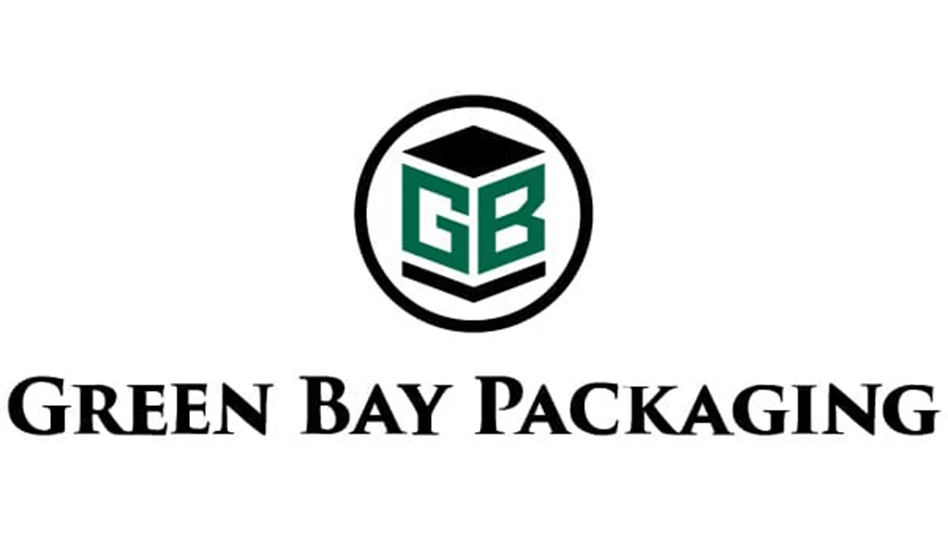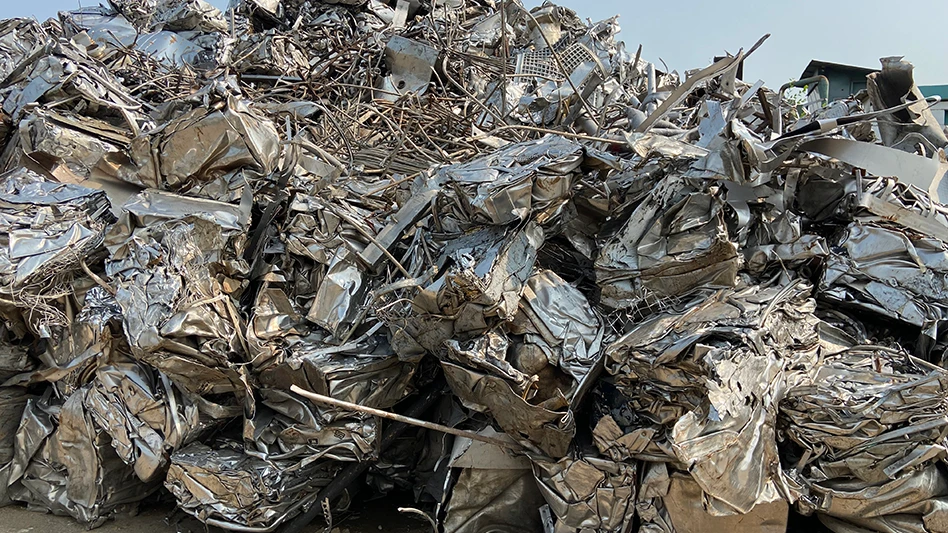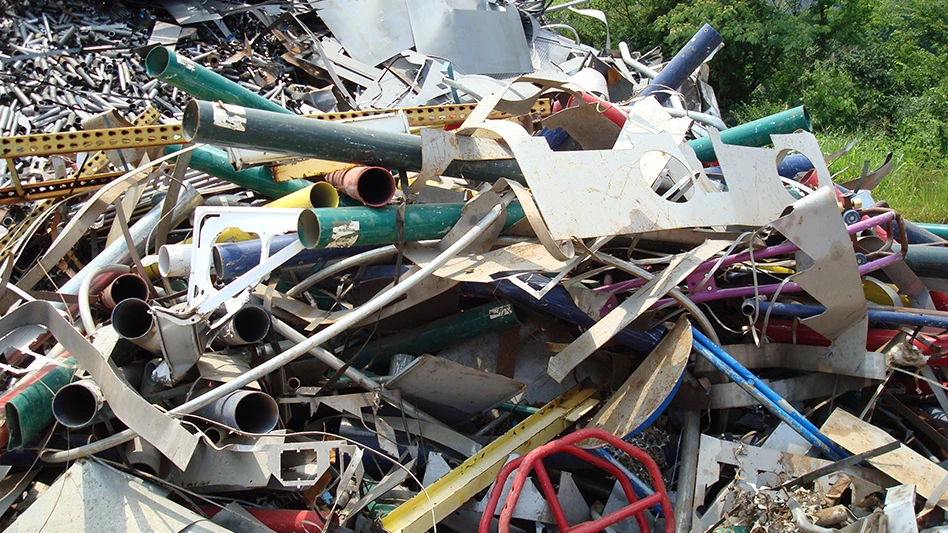Have you ever noticed how the winners at NASCAR and Indy races seem to change tires every time there is any slight change on the track? Pit crews have a pile of tires standing by…one for every condition.
That same philosophy can pay off for recyclers trying to maximize loader efficiency. Different tires will perform better under different conditions. Just as different pit bosses will choose different tires for different tracks, recyclers need to decide which tires work well on their particular sites.
"You need to look at each application—it is always project-specific," says  Chuck Berg, industrial sales representative with Coastline Equipment, Long Beach, Calif. "In every case, you have to be sure the machine is under control."
Chuck Berg, industrial sales representative with Coastline Equipment, Long Beach, Calif. "In every case, you have to be sure the machine is under control."
Tim Good, global customer account manager for Goodyear Tire, Akron, Ohio, agrees that the machine’s use will determine the best tire for the job.
"You have to look at the duty cycle—the length of haul from A to B and the number of times the machine makes the run," Good says.
"Once I determine the required tread depth, I look at radial vs. bias tires," Good says. Assuming a pneumatic tire, the conditions on the job site will determine whether the machine requires a radial or a bias-ply tire that does not flex as much.
"If the work cycle is fast enough, go with a radial," Good advises. "If the job site is pretty clean, a radial tire is a good product," he says. "If you are getting sidewall puncture, go with a bias tire. Bias sidewalls stand up straighter and don’t bulge out," he explains.
While Goodyear sells pneumatic tires, which can be used in material recovery facilities (MRFs), many people swear by solid or foam-filled tires in tough conditions, such as scrap yards.
"We do a lot with tires that are puncture-proof, especially in the demolition industry where there is the constant possibility of tire damage due to re-bar, wire and other material on the site," says Al Springer, Cleveland branch manager for Company Wrench. The company has locations in Columbus, Ohio, and Plant City, Fla. Company Wrench recommends a solid or foam-filled tire in this type of application.
"It depends on the conditions where you will be working, but if there is debris, we’d recommend a solid or a regular tire with foam filling," he says.
"If I had to choose one tire to do it all, it would be a soft-ride, staggered-gear-load, eight-notches-per-side tire," says Bennie McGill, Midwest sales rep with Setco Solid Tire, Idabel, Okla. "But when you are talking tire or tread design, keep in mind that you are working in all kinds of situations, and no two job sites are the same," he says. "You need enough traction to do the job, but not more than the job requires."
| Increasing Productivity |
|
Over three generations of continuous growth, George’s Salvage, Newton, N.J., has kept a close eye on how the company uses its property in one of the nation’s most densely populated regions. To make best use of the company’s 3-acre site, George’s now deals only in metals, including ferrous, nonferrous and alloyed material. The latest space-saving change at George’s Salvage is a pair of new, specially equipped Sennebogen 835 M scrap handlers. The machines perform all of the scrap handling operations in the yard, from loading and unloading trucks to feeding the shear. Both are fitted with a custom coupler designed by yard owner Mike Miller that allows George’s operators to switch the grapple attachment to or from a lifting magnet in less than two minutes. Less equipment in the yard means more room for material and traffic. But the Millers report additional efficiencies, including the reach of the new scrap handlers. Mike says, "The first one came with a 52 ft. reach, and the newer one is 6 feet longer." He adds, "You can stack material higher; you don’t have to stop and pick up the outriggers as often. It’s much easier to load dumps from the back, so that simplifies our traffic in the yard and saves wear on the pavement." The scrap handlers are equipped with rubber tires that further reduce maintenance in the yard. Mike says the paved yard remains free of ruts and potholes. |
Berg notes that re-bar can do in tires that have any kind of apertures. "You need a solid tire. You don’t want any apertures," he says.
McGill cautions that when it comes to foam-filled tires, they are only as good "as the container that holds the foam." He also notes that solid tires come in varying qualities. "Invest in a good solid tire, and it will outperform foam-filled three-to-one," he says.
"We switch the tires to a solid tire from SG Revolution," says Lee Gibson, Gibson Machinery, Oakwood, Ohio, of the loaders it sells.
Gibson says that his customers report that the solid tires seem to hold up well. "It seems more people go with the solid over the foam-filled since they last longer," he adds.
TREAD PATTERNS
If a loader will be running on a smooth pad, like a concrete surface at a crusher or shredder, Springer recommends a smooth tire. "You will find you get better wear than with a lugged tire," he says.
In loose, sloppy conditions, Springer tells recyclers to go with an L-4 lug type. "If you are operating on aggregate, we’d use an L-5," he adds.
Good notes that a deep tread, like that on an L-5, will be more difficult to puncture than the shallower tread on an L-3 or L-4. "L-5 is meant for a rough surface," he says.
Slick tires are probably the most cost-effective in many cases, but they do not perform well in muddy or sloppy conditions.
Sponsored Content
SENNEBOGEN 340G telehandler improves the view in Macon County, NC
An elevated cab is one of several features improving operational efficiency at the Macon County Solid Waste Management agency in North Carolina. When it comes to waste management, efficiency, safety and reliability are priorities driving decisions from day one, according to staff members of the Macon County Solid Waste Management Department in western North Carolina. The agency operates a recycling plant in a facility originally designed to bale incoming materials. More recently, the building has undergone significant transformations centered around one machine: a SENNEBOGEN telehandler (telescopic handler).
Sponsored Content
SENNEBOGEN 340G telehandler improves the view in Macon County, NC
An elevated cab is one of several features improving operational efficiency at the Macon County Solid Waste Management agency in North Carolina. When it comes to waste management, efficiency, safety and reliability are priorities driving decisions from day one, according to staff members of the Macon County Solid Waste Management Department in western North Carolina. The agency operates a recycling plant in a facility originally designed to bale incoming materials. More recently, the building has undergone significant transformations centered around one machine: a SENNEBOGEN telehandler (telescopic handler).
Bruner says he sees too many tires on the toss-out heap that have 50 percent of their tread left but that are damaged beyond use. "With TY tires, you can run it to the core [and] even wait an extra month to cap the tires, since it is the same material throughout," he says. "We encourage our customers to re-cap our tires," he says.
FUEL SAVINGS?
If you are looking for a lively lunch-hour discussion, ask a few recyclers sitting around the diner whether solid tires or foam-filled tires affect fuel consumption on a wheel loader or skid steer. Given fuel prices today, it is more than idle speculation. Most will tell you that it makes sense that different tires should give different efficiencies. However, few have any empirical data.
"I’ve never heard that there is any fuel savings with different tires," Springer says. "You might get less skidding with a solid tire than with a pneumatic one," he speculates.
Berg also points to the efficiency of operation gained by using the right tire as a potential source of fuel savings for an operator.
"In theory, there should be a 1 or 2 percent gain for solid tires—but it wouldn’t be much," McGill says. He notes that the figure could drop to minus 1 or 2 percent as the tire gets smaller.
Good agrees that proper tire choice probably affects fuel consumption. However, he says that other factors—such as air pressure and operator habits have a big effect on fuel consumption, too.
"Most people do not track fuel use," Good says. However, he says he expects that some solid research will be forthcoming.
Bruner says he doubts there is much difference in fuel consumption, unless it comes from running solid tires right down to the nubbins, in which case, the loader has to burn a bit more fuel to get those extra revolutions than it would ordinarily.
"The biggest variable is the operator. You get a cowboy operator, and machine wear, tire wear and fuel usage all go up," McGill says. Running the machine correctly makes a bigger difference in fuel consumption than tire type, he adds.
Meanwhile, Good recommends maintaining the proper air pressure in any pneumatic tire as a good way to maximize both fuel consumption and tire life. "Any time the air pressure is down, it will increase rolling resistance," he says.
The author is a contributing editor based in Cleveland and can be contacted at curt@curtharler.com.
Get curated news on YOUR industry.
Enter your email to receive our newsletters.

Explore the June 2008 Issue
Check out more from this issue and find your next story to read.
Latest from Recycling Today
- ReMA lobbies for shredder wear parts tariff exclusion
- Dow, Gruppo Fiori develop recycling pathway for automotive polyurethane foam
- Ascend produces recycled lithium carbonate from used LIBs
- RecycLiCo acquires building to serve as corporate HQ, operational hub
- EZVIZ partners with Plastic Bank
- Radius, under new ownership, replaces CEO
- SMS in Illinois sells assets to equity investor
- Mayr-Melnhof reports earnings growth so far in 2025






